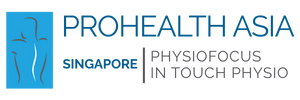Decoding Your Chronic Back Pain: Is It the Disc, the Nerve, or the Muscle?
Chronic back pain is a common concern that affects millions of adults worldwide. Understanding the source of pain is crucial for effective treatment and recovery. Back pain can originate from the intervertebral discs, nerves, or muscles, and each type requires a different approach. Identifying whether your discomfort comes from a disc, a nerve, or a muscle can guide appropriate interventions and improve long-term spinal health.
Disc-Related Back Pain
The intervertebral discs act as cushions between the vertebrae, absorbing shock and supporting spinal movement. When a disc becomes damaged or herniated, it can press on surrounding structures and cause pain. Disc-related back pain is often deep, localized, and may worsen with bending, lifting, or sitting for long periods.
Physiotherapy for disc pain focuses on relieving pressure, improving core strength, and restoring mobility. Exercises such as gentle extension movements, pelvic tilts, and stability training help support the spine while reducing the risk of further disc injury. Early intervention can prevent chronic discomfort and maintain functional independence.
Nerve-Related Back Pain
Nerve-related back pain occurs when a spinal nerve becomes irritated or compressed. Common causes include herniated discs, spinal stenosis, or spondylolisthesis. Nerve pain often radiates beyond the lower back, affecting the legs or feet in conditions such as sciatica. Symptoms may include tingling, numbness, or shooting pain along the nerve pathway.
Physiotherapists use targeted exercises to relieve nerve compression and improve posture. Nerve gliding, gentle stretches, and core stabilization exercises can reduce irritation and enhance overall spinal function. Proper guidance ensures movements are safe and effective, helping prevent long-term nerve damage.
Muscle-Related Back Pain
Muscle-related back pain often results from overuse, poor posture, or sudden strain. It is usually localized and may feel achy or stiff. Muscles surrounding the spine play a critical role in maintaining alignment, supporting movement, and absorbing impact. Weakness or tightness in these muscles can increase susceptibility to injury.
Physiotherapy addresses muscle-related pain through strengthening, stretching, and corrective exercises. Targeting the core, glutes, and spinal stabilizers improves posture and reduces stress on the spine. Manual therapy, massage, and movement retraining may also relieve tension and restore normal function.
How to Identify the Source
Determining the cause of chronic back pain often requires a combination of medical evaluation, imaging, and physical assessment. Key indicators include:
Disc pain: Deep, localized pain that worsens with bending or sitting.
Nerve pain: Radiating pain, tingling, or numbness in the legs.
Muscle pain: Aching, stiffness, or soreness in the back muscles.
Physiotherapists are skilled at assessing movement patterns, strength, and flexibility to identify the root cause of pain. Early and accurate diagnosis ensures a targeted treatment plan for faster recovery and long-term spinal health.
Managing Chronic Back Pain
Treatment for chronic back pain should be tailored to the source of the discomfort. Physiotherapy is often central to recovery, combining exercise, manual therapy, and education to restore function and prevent recurrence. Additional lifestyle strategies, including ergonomic adjustments, regular movement, and posture awareness, support long-term spinal health.
Taking Control of Your Back Health
Understanding whether your chronic back pain originates from the disc, nerve, or muscle empowers you to take control of your recovery. Targeted physiotherapy interventions can relieve pain, improve mobility, and strengthen supporting structures. By addressing the underlying cause, you can reduce the risk of future injury, maintain an active lifestyle, and improve overall quality of life.

